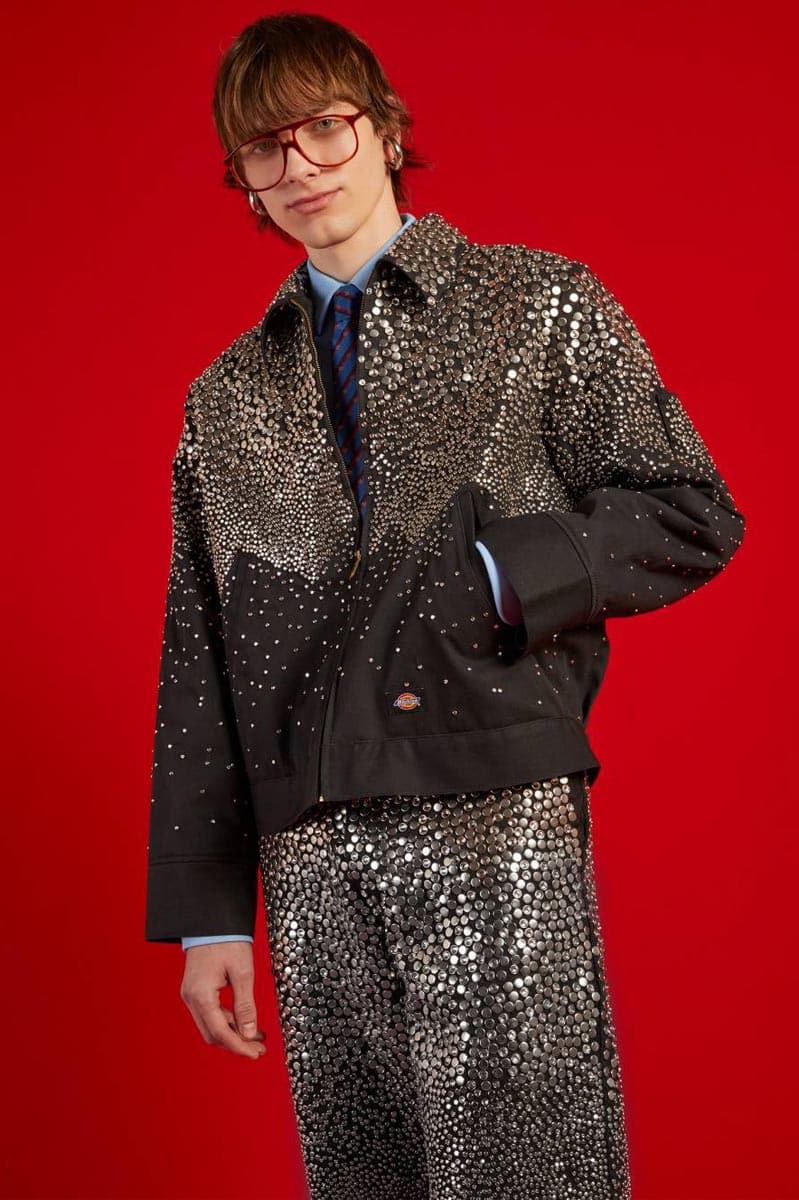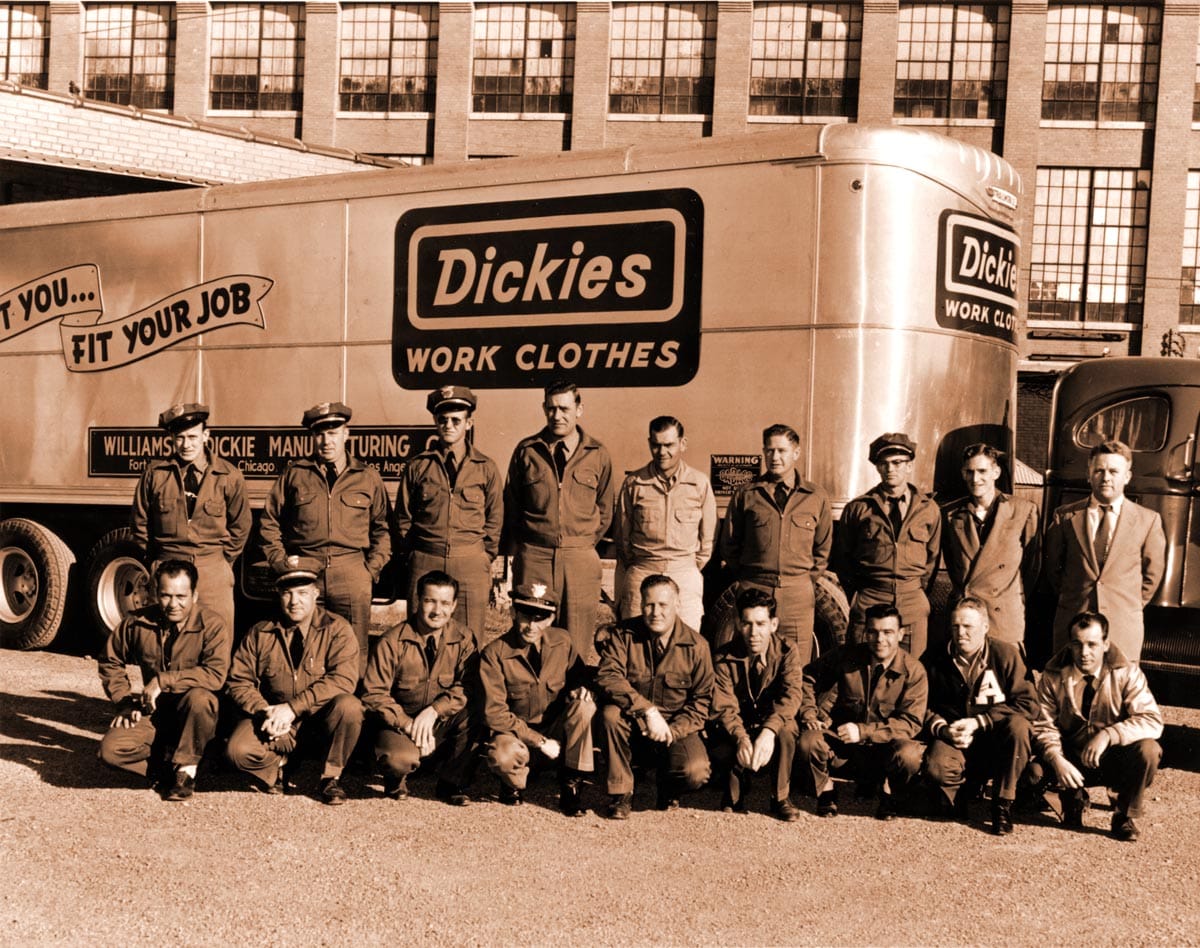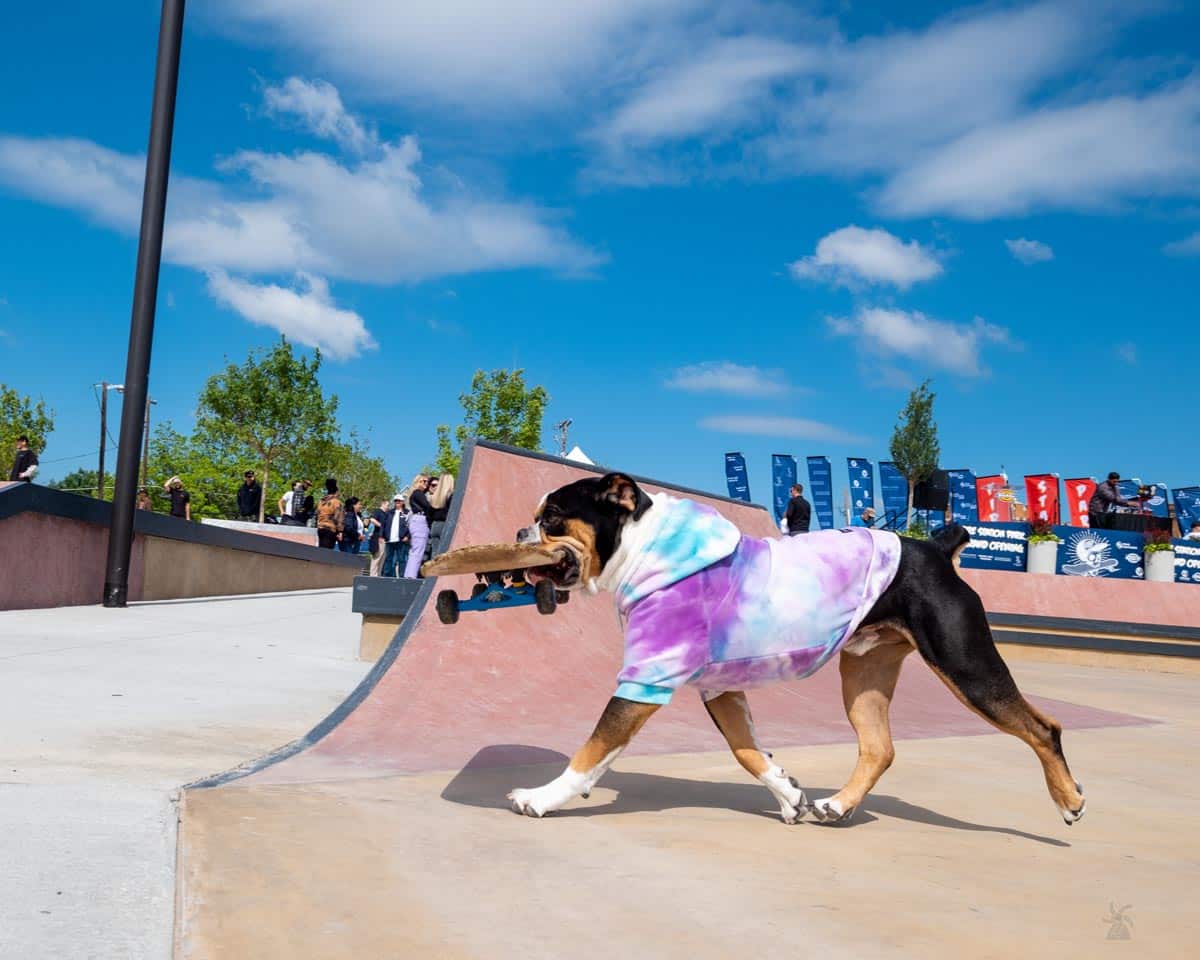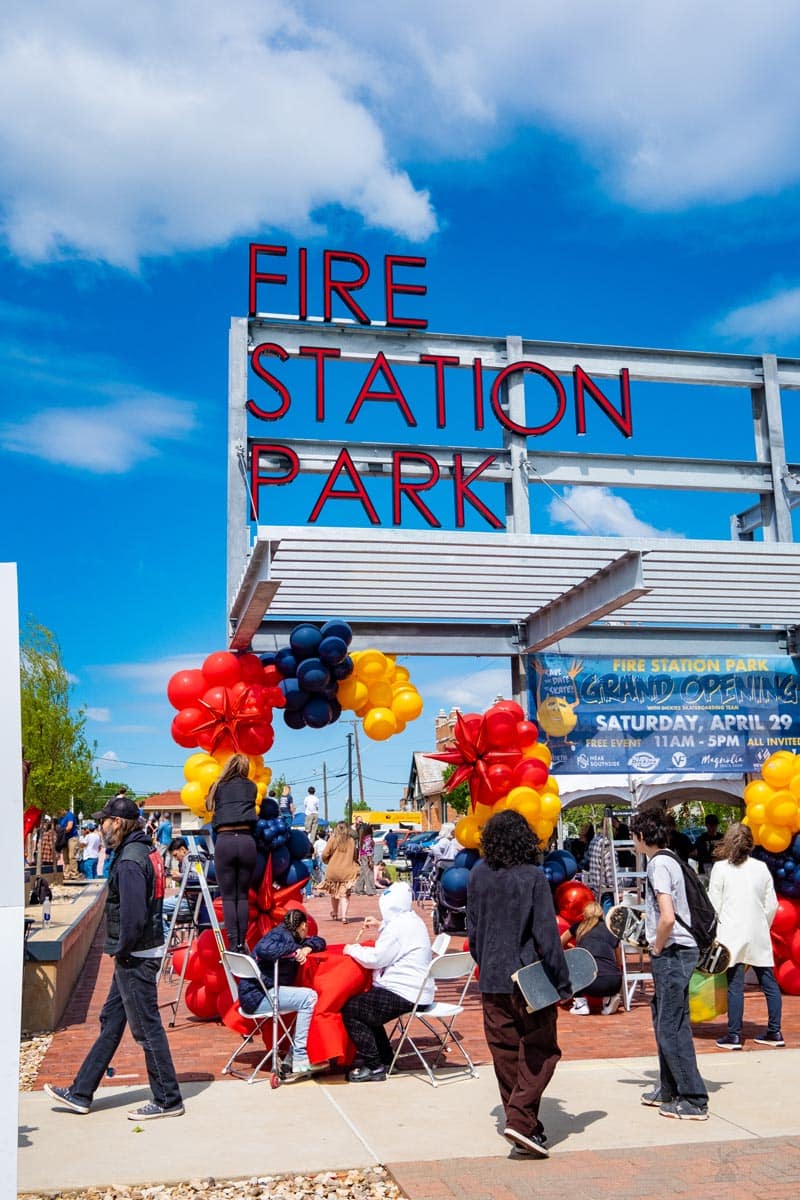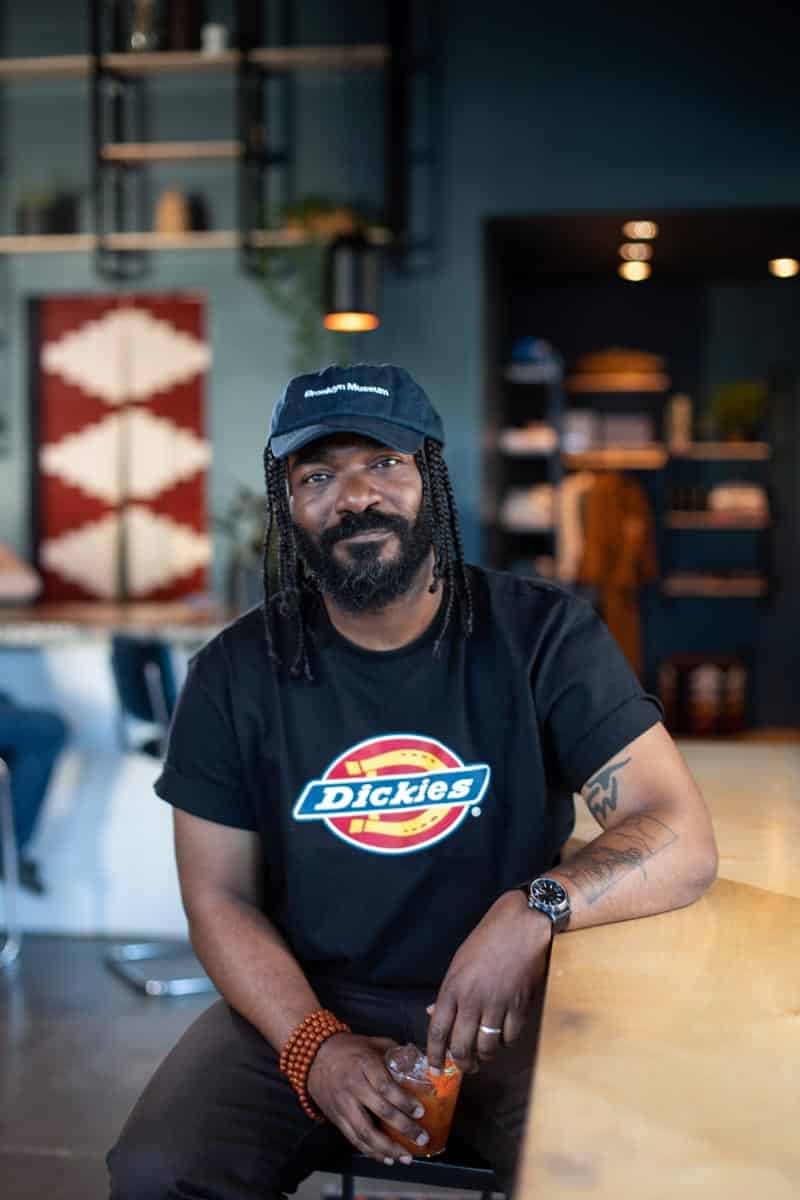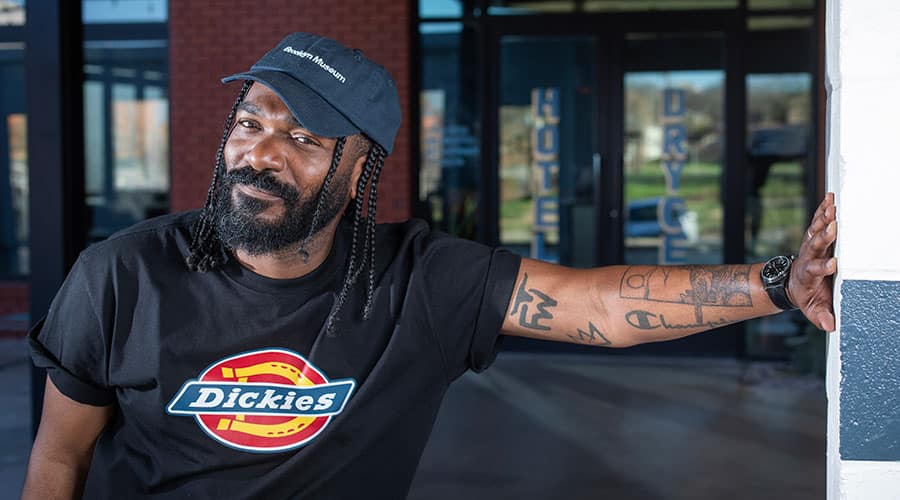
Everything Everywhere All at Once
By Jenny B. Davis
With a fan base ranging from skateboarders to construction workers and even luxe lovers, Fort Worth-born Dickies continues to grow its billion-dollar global clothing brand and invest at home
Fort Worth entrepreneur Jonathan Morris is used to being recognized. Which isn’t surprising, considering he hosts a popular TV show on the Magnolia Network and owns a bustling barbershop and a boutique hotel with a bussin’ lobby bar. But Morris is also pretty easy to recognize thanks to his signature look: braids, bandana, Dickies work shirt and Dickies Original 874 work pants.
Morris adopted Dickies as a de facto uniform several years ago, and his affinity for the popular global workwear brand has become so conspicuous that the company once sent him free clothes. Not that he can’t buy them himself: His favorite 874s — a simple wrinkle-resistant twill pant first released in 1967— retail online starting at $29.99.
“Dickies speaks to me because it’s a brand for everyone, and it’s timeless, accessible, affordable and functional,” he says. “I can wear Dickies 874 work pants to a meeting with my bankers, and I can wear them to change a tire — it’s like a blank canvas that you can style in your own way for any situation.”
Morris’ words just might be the best explanation yet for why Dickies means so much to so many different people worldwide.
Dickies began in 1922 as the Williamson-Dickie Manufacturing Co., when C.N. Williamson and Col. E.E. Dickie bought out the other partners of a bib overall company they started. With Williamson’s son, they grew the new company into a successful international brand. Over the ensuing century, the brand’s workwear, including staples such as its 874 pant, 1574 work shirt and original bib overalls, became beloved by the company’s intended audience of workers and makers.
But Dickies also came to be organically embraced by several significant subcultures. Rap and hip-hop artists discovered Dickies in the 1990s, especially on the West Coast. At the time, L.A.’s notorious Crips favored the Dickies 874 pant. When rap supergroup N.W.A adopted the look, it hit the hip-hop mainstream. Icons such as Ice Cube were known to pair 874s with 1574s, and Tupac Shakur customized his Dickies bib overalls with his signature slogan, “Thug Life.”
Today, the brand remains just as cool within the culture, and its appeal extends far beyond California. In 2019, Kanye West wore a Dickies Eisenhower bomber-style jacket to the Met Gala (his then-wife, Kim Kardashian, wore Mugler). It’s also not just for men anymore, either (Cardi B is a fan).
Skateboarders discovered Dickies in the 1980s, co-opting its affordable, durable gear. Features like double-knee construction stood up to sliding and swiping against asphalt, and the roomy fit of the 874 allowed wearers the space to bend, twist and flip.
“The brand’s utilitarian mindset really carries through,” says Johnny Powell of Centre, a streetwear and skatewear boutique on West Magnolia Avenue. The shop carries Dickies at its Fort Worth and Dallas locations.
These bona fides combined to make Dickies a status brand in Asia as well, says the mononymous global streetwear content creator Landy, known by his Instagram handle, @LDN2HK.
It all started when the brand became big in Japan. “When it comes to streetwear in Asia, Tokyo is the city that has the history and leads the trends that then spread to other cities like Hong Kong and Seoul,” he says. In Tokyo, a Dickies fit has been fire since the ’90s, which is when MTV Asia began airing videos featuring Dickies-clad rappers, and Thrasher magazine filled its pages with Dickies-wearing skateboarders, he says.
Dickies is also synonymous with status among the subgroup considered the ultimate curators of street style: hypebeasts. The brand’s regular workwear, along with a more tailored collection of its classics called Dickies Construct, is currently sold by top online luxury streetwear retailers alongside hypebeast-endorsed labels like Off-White, Marni and Fear of God.
Even Gen Z is behind the brand thanks to TikTok. Viewers flock to influencer posts showing how to fold down the waistband of an oversized pair of 874s to create a Y2K-inspired low-rise look.
It helps that Gen Z’s favorite celebrities have embraced the brand, leading one GQ writer to note that Justin Bieber, A$AP Rocky and Kaia Gerber are now “reaching for the same pants as my middle-aged window-washing uncle.”
Morris also appreciates this dichotomy, but he says the deciding factor in his decision to adopt a Dickies fit was the brand’s connection to his own hometown.
Remember C.N. Williamson and Col. Dickie? They established Dickies right here in Fort Worth, in a red brick building on West Vickery on the Near Southside. The building still stands today, and Morris can see it from his living room window.
“To me, Dickies is more than a historic legacy brand,” he says. “It’s the hometown team.”
Dickies shares that mindset. Although the company is no longer locally owned, it still plays a major role in shaping the city it calls home. Dickies’ global corporate headquarters remains here, and through significant infrastructure investments, the company continues to display its commitment to enriching and improving the city.
Staying Local
In 2017, Dickies sealed an $820 million deal to shift ownership to VF Corp. The Denver-based Fortune 500 public company identifies as a global leader in branded lifestyle apparel, footwear and accessories.
It was a natural fit. Not only was VF also a heritage brand — it began in small-town Pennsylvania in 1899 as the Reading Glove and Mitten Manufacturing Co. — but it also was uniquely suited to appreciate the diversity of the Dickies customer base. That’s because it already owned brands that were successful in the same kinds of spaces.
Timberland, a VF brand, is popular for its waterproof leather boots, which are beloved by construction workers and rappers alike. The North Face, which specializes in rugged and durable outdoor gear, is also VF-owned, as is Vans, the OG skateboard-centric lifestyle brand founded in California in the ’60s. (VF’s $2.1 billion acquisition of Supreme in 2020 sent its hypebeast appeal into the stratosphere.)
Despite its common ownership portfolio, VF is known for respecting and retaining the distinctive character inherent in each of its brands — a significant reason, observers agree, that cool brands bought by the company are able to stay cool, post-acquisition.
Protecting the Dickies legacy is so important to VF, it’s baked into the Dickies marketing plan, says Sarah Crockett, chief global marketing officer for the brand. “My job and my team’s job,” she says, “is not to chase cool or overly lean into the hype but to support the brand’s timelessness and its value proposition and to leverage our platform to elevate our communities.”
Landy speculates most consumers don’t know that VF owns some of their favorite brands — if they even care. When it comes to heritage brands, he says, corporate ownership doesn’t matter because “pedigree will always elevate it above others.”
Since its acquisition of Dickies, VF has made several moves specifically designed, in Crockett’s words, to elevate its communities. Skateboarders have perhaps the most to celebrate. Dickies now sponsors a pro skateboarding team that includes some of the best and most high-profile talents in the game. It’s also created a dedicated skateboarding clothing division, and it issues special collections each year designed in collaboration with members of its skateboard team.
Dickies also has kept the hypebeasts happy through exclusive, limited-edition collabs with a variety of culturally relevant brands like Opening Ceremony and Sky High Farm, a nonprofit that addresses food security in New York. Dickies even entered an epic collab with Gucci Vault, a concept brand created by Alessandro Michele, Gucci’s then-creative director.
Not surprisingly, these exclusive collabs aren’t priced the same as the mainstream Dickies line. Hint: They’re more expensive. Sometimes, a lot more.
Take the December 2022 partnership with Gucci Vault. This ultra-limited-edition collection included both the 874 pant and the Eisenhower jacket, albeit in a Gucci-fied format bedazzled with hand-applied stud, spike and star embellishments. The designs were, highsnobiety.com reported, the ultimate blend of handy and fancy. The collection, which sold through the Gucci Vault website, also boasted Gucci-fied prices, such as $6,590 for the sparkling 874s. And yes, it sold out within a few days.
Surprisingly or not, all of the magic engineered to elevate the brand’s diverse communities worldwide has mostly come from Dickies’ global headquarters. That’s not to say things haven’t changed. The company is currently relocating a few blocks from its origination point, jumping from West Vickery to Taylor Street downtown; the company hasn’t confirmed any changes in workforce. For now, however, Dickies still owns its original red brick building, and the company store at 521 West Vickery remains open for business.
Here, the hometown brand’s wide-ranging appeal is in full effect as people from across the metroplex shop deals on merchandise ranging from health care scrub sets to kids’ backpacks to highlighter-yellow pants from the brand’s Urban Outfitters collab.
On a recent Sunday afternoon, Asia Edmonson drove from Irving in hopes of finding the perfect Dickies fit for an upcoming Young Nudy concert. “Dickies reminds me of ‘Old School’ rap back in the ’90s, but it’s still making a fashion statement,” she says, adding that she appreciates that “the price is reasonable, and the quality is nice.” Just steps away, DeVante Brown shops with his young son. Brown, a truck driver, is looking for a new pair of pants. He’s come to Dickies because he appreciates the brand’s “very durable material.”
But Dickies has been doing more for Fort Worth than simply staying in town. Case in point: two of its most significant infrastructure investments — Dickies Arena and Fire Station Park.
The importance of both to the city can’t be overstated, says Fort Worth Mayor Mattie Parker. “We’re incredibly proud that Dickies’ roots are right here in Fort Worth and that they are a company that chooses to be woven into the fabric of our city by consistently joining with us in dynamic public-private partnerships,” she says. “Dickies represents Fort Worth on the national stage as the namesake of the world-class Dickies Arena, drawing visitors from all over, but they also support projects near and dear to our residents’ hearts, like the newly opened Fire Station Park in the Near Southside.”
Building a Legacy
When Bill Thornton, then the president and CEO of the Fort Worth Chamber of Commerce, said in 2017 that the city had outgrown both the historic Will Rogers Memorial Center and Convention Center & Arena, it seemed he was just restating the obvious.
What the city needed, Thornton said, was “a larger, newer venue for existing events and to attract new ones.” This happened in the form of the $540 million Dickies Arena, a state-of-the-art multipurpose venue that opened in October 2019.
The terms of Dickies’ naming rights deal remain undisclosed.
The arena has since become the site of major concerts and sporting events, and it serves as home for the Fort Worth Stock Show & Rodeo, Professional Bull Riders World Finals and more. It also has helped contribute to an overall citywide increase in visitor spending of 25% in 2021 and 2022, according to Visit Fort Worth. The area around the arena also enjoyed an economic bounce during those years, with sales tax revenue and property values rising, according to the Texas Cultural Trust’s 2023 State of the Arts Report. Visit Fort Worth also noted that the city’s tourist economy supports 30,000 jobs — enough to fill Dickies Arena twice.
Most recently, Dickies has lent its name and support to a city-owned facility with a much more localized impact — Fire Station Park. The approximately $2.7 million project, which opened April 29, transformed a vacant lot on the Near Southside’s Hemphill Street into a family-friendly community meeting spot with a fenced dog park, central green space, pump track for BMX bikes and market plaza to host meetings and vendors. At the center of the park sits Dickies Skate Plaza.
The skateboarding space boasts 15,000 square feet customized for shredding, with Dickies signage adding color and cred. The brand’s pro team even came to the grand-opening celebration to show off what could be done on the skate plaza’s ramps, ridges and curves.
Better yet, Dickies Skate Plaza doesn’t just benefit locals — or even those skilled with a skateboard. Anyone in the world can virtually skate the park through the video game Skater XL, accessible via PlayStation, Xbox and PC.
Similar to the public-private arrangement behind the arena, Dickies provided the corporate complement to the community effort behind the park. The neighborhood — residents and businesses alike —
had been advocating for the park since 2016, and Magnolia Skate Shop led a grassroots fundraising effort that contributed a significant amount of money to the project. An additional major investment from Dickies and the VF Foundation brought it home.
The investment certainly made sense for Dickies from a marketing standpoint, but Crockett says it also aligned with the goals of the VF Foundation. “That’s something the foundation has been bullish about, making sure we spend our dollars in our backyard — in the communities where our employees live,” she says.
Megan Henderson, director of events and communications for Near Southside, Inc., and Near Southside Arts, echoes the sentiment.
“As we shift to an increasingly global world, it is especially meaningful that Dickies has made such a significant investment in the community right at its doorstep,” Henderson says. Fire Station Park, she says, serves as a nexus for diversity, bringing together people from across the city “to skate, play and build relationships.”
Meanwhile, Morris would welcome the opportunity to connect his boutique hotel with Dickies. Hotel Dryce is notably the city’s first Black-owned hotel and an innovative repurposing of a former dry ice factory.
“I would love to do a line of workwear apparel that the staff could wear but we could also sell,” he says. “That would be really dope.”

